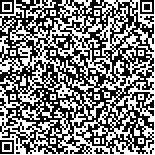下载中心
优秀审稿专家
优秀论文
相关链接
摘要

利用星载微波辐射计对全球海表盐度的卫星遥感探测,其精度会受到多种环境因子的影响。采用广义加性模型GAM和偏最小二乘法PLS分析了水温对海表盐度遥感反演精度的影响,同时,利用ARGO观测数据对SMOS卫星反演的赤道太平洋和西北太平洋海表盐度进行精度检验。结果表明,水温对海表盐度反演精度具有显著影响,且Stokes矢量第一参数(总辐亮度)是海表盐度反演的最佳亮温参数。在平均水温约16 ℃时的均方误差约为0.9 psu,23 ℃水温下的均方误差约为0.7 psu,30 ℃水温下的均方误差约为0.4 psu,即高水温下盐度反演精度相对较高。
Global sea surface salinity (SSS) is retrieved using satellite microwave radiometers, Currently. However, SSS remote sensing with an L-band radiometer is still challenging due to the low sensitivity of its brightness temperature to SSS variation. Results show that the sensitivities of vertically (Tv) and horizontally (Th) polarized brightness temperature range from 0.4 K/psu to 0.8 K/psu and from 0.2 K/psu to 0.6 K/psu, respectively, at different observing angles and sea surface temperatures (SSTs). Hence, high-accuracy measurements are required. However, the quantitative effect of Sea Surface Temperature (SST) on the satellite retrieval of SSS remains unknown. In this study, we investigate the effect of SST on the accuracy of salinity retrieval from the Soil Moisture and Ocean Salinity (SMOS).
The dielectric constant model proposed by Klein and Swift has been used to estimate the Tv and Th of a flat sea water surface at L-band and obtain the derivatives of Tv and Th as a function of SSS to show the relative sensitivity at different incident angles (12.5° and 42.5°). Moreover, the Generalized Additive Model (GAM) and the Partial Least Squares (PLS) regression method were used to investigate the effect of SST on the accuracy of salinity retrieval from the SMOS. Furthermore, SMOS data are compared with Argo data to assess the quality of satellite-derived SSS data at different SSTs by calculating the root-mean-square error (RMSE) of two regions of the Pacific Ocean far from land and ice.
Results show that satellite-measured brightness temperature has high sensitivity to SSS variation and good accuracy of SSS retrieval with high SST. For most open oceans where surface salinity is typically greater than 32 psu, the sensitivity is approximately 0.2-0.25 K/psu for Tv and Th when the SST is 5 ℃, and the brightness temperature is more sensitive to the SSS for Tv than Th with increasing SST. When the SST increases to 30 ℃, the sensitivity is approximately 0.8 K/psu for Tv. Moreover, the RMSEs of SMOS-derived SSS data are approximately 0.9, 0.7, and 0.4 psu in regions of the Pacific Ocean where the SSTs are approximately 16 ℃, 23 ℃, and 30 ℃, respectively.
Results of the GAM and the PLS model indicate that satellite-measured brightness temperature highly correlates with in situ SSS at high SSTs. In addition, validation results of Argo data suggest that water temperature significantly affects SSS retrieval accuracy and that accurate SSS retrieval can be achieved at high SSTs. These results indicate that SST can significantly influence the retrieval accuracy of SSS. Hence, the development of a new SSS retrieval algorithm that adapts to low SSTs is necessary.

